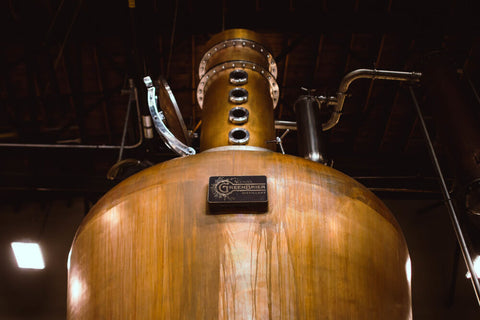Barrel and Time: The Scientific Art of Aging Whiskey and Shaping Flavors
Small, independent distillers have seen an uptick in interest in making their own spirits among booze enthusiasts and newbies to the market. The meteoric ascent of the craft beer movement has fueled this yearning. The allure of distilling one's own whiskey, gin, or other alcoholic beverages leads many customers to our website in search of equipment like the 1 gallon copper moonshine still. Regrettably, the usage of barrels is often overlooked by whiskey distillers, despite its central role in the process.
The ultimate flavor of a quality whiskey is often the consequence of the whiskey having been matured in barrels, even though other alcoholic beverages, such vodka or white whiskey, do not need to be preserved in barrels. Oak is the best type of wood for barrels since it may degrade chemicals and add flavor to the liquid. The most common sort of barrel is made from oak and can be any size or shape. As the barrel aging process contributes up to 60% of the overall flavor of the finished whiskey, it is crucial for everyone interested in distilling whiskey to select the suitable barrels for the task.

In order to maximize the amount of interior surface area in contact with the liquid, small barrels are favored by independent manufacturers. Other factors, such as the location of storage, also have a role in determining the effects on the final product (whether it be indoors or outside, warm or cold weather, rough or still conditions, etc.). While barrels play a crucial role in the whiskey-making process, the still is also crucial. We sell copper moonshine stills with a gallon capacity that may be used to distill rum, cider, whiskey, and vodka, among other alcoholic beverages.
Investing in small barrels made with great craftsmanship will allow you to age your own whiskey and enjoy the benefits of this process in a few years. It goes without saying that purchasing a one gallon copper moonshine still from our company is the first step toward creating the finest spirits possible.
- During aging whiskey, the rate at which the alcohol evaporates from the barrel can have a significant impact on the whiskey's flavor intensity.
- While uncharred oak barrels may add a slight vanilla or caramel flavor to the whiskey, charred oak barrels can add a distinct smoky flavor.
- Wood's porous structure lets air in, which triggers chemical processes that improve the whiskey's flavor and aroma over time.
- Other woods, such as cherry or apple, may offer a sweeter flavor to the whiskey, while the tannins in oak wood can give it a dry, astringent quality.
- A faster, more concentrated flavor character can be extracted from a barrel with thinner staves, while a slower, more nuanced flavor profile can be achieved with thicker staves.
- The whiskey's flavor can also be affected by how much the barrel was toasted; a lighter toast brings forth more vanilla and caramel flavors, while a darker toast adds smokiness.
- The rate and kind of flavor development in whiskey can be affected by its storage environment's temperature and humidity, with warmer, drier regions typically yielding more powerful, aggressive flavors.
- Whiskey's flavor can be affected by its location in the warehouse, such as on the top or bottom shelf, due to temperature and air flow changes.
- Whiskey aged in barrels that have housed sherry or bourbon, for example, develops a deeper, more nuanced flavor.
- More fast aging and temperature changes may occur in barrels that are kept near windows or in other regions with more direct sunlight.
Whiskey connoisseurs and scientists alike continue to be fascinated by the science underlying barrel shape and how it affects whiskey flavor. Several elements, like the type of wood used and the size and form of the barrel, significantly impact the whiskey's final flavor. Therefore, it is essential for whiskey makers to have a firm grasp on the chemistry involved in barrel design and aging. Whiskey is a distilled spirit, so the next time you have a glass, think about the skill and science that went into making it.